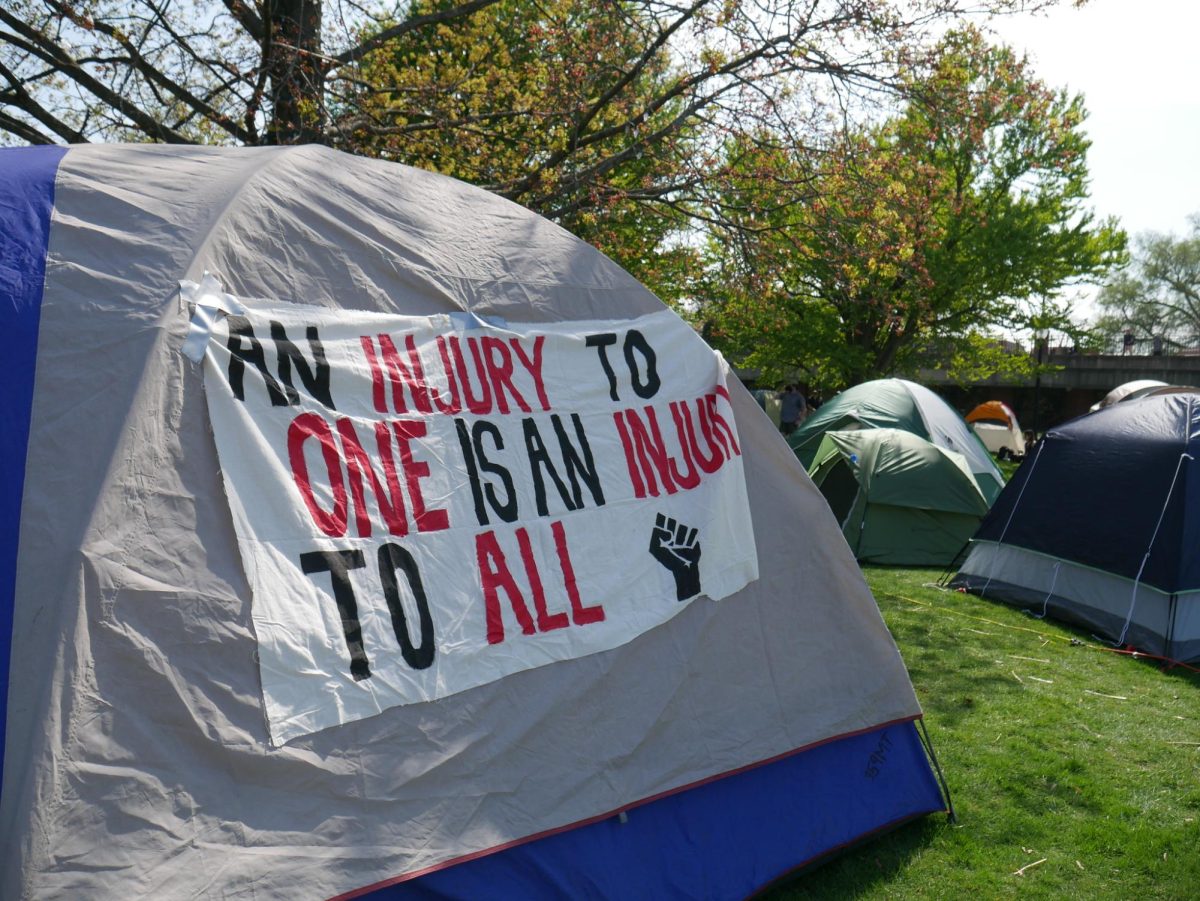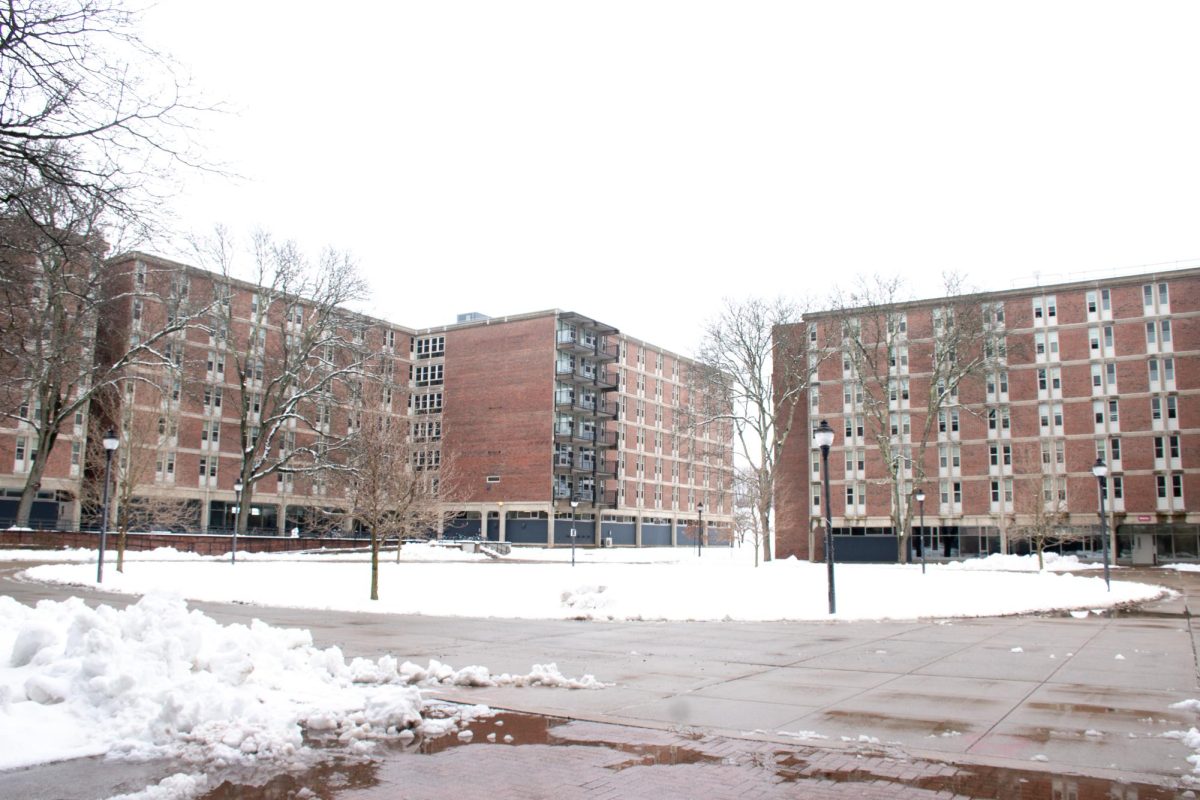
Editor’s note: This is the first in a three-day series about Rebecca F. Owen’s experience volunteering at Hampshire County Jail.
The cold air ushered me into a bright entrance. Ahead, amid a sea of beige walls was a window, and behind it, a desk. A man wearing a brown uniform watched me walk closer, probably noticing the look of false confidence on my face. My stomach did a flip. I swallowed and said:
“Hi, I’m here for decision training.”
“Name?” asked the man. I gave it to him. “Fill out this form and present your driver’s license,” he instructed me. I did. He told me to walk to the double doors. I walked through a metal detector standing in the hallway as instructed, and then raised my arms as he brushed a security wand over my arms, body and legs.
“All set,” he told me. I started down the hall.
As I walked into the “trap,” as it’s called by those who have walked through it, I heard the heavy door slide shut and lock behind me. I was inside a jail. I could hear the inmates from a distance, a rumble of deep voices. A correctional officer walked past me and asked if I knew where I was going.
“Yes,” I managed to get out. “Just to the press box.”
Inmates usually meet in the press box with their lawyers, and it’s one of the only rooms in the jail without a security camera in it. Once the door closes, correctional officers cannot hear what’s said inside, creating the only private area for inmates in the complex.
I waited outside the press box on a wooden bench. The man I would be working with for the next 10 weeks was supposedly on his way to meet me. Ten minutes passed. I worried he might never come and I’d be stuck here by myself in a jail for the hour. Fifteen minutes past the hour a gate clicked open, footsteps sounded, then the gate clicked shut. A big man rounded the corner in a blue jumpsuit.
“Hi,” I said. “I’ll be your decisional trainer.”
I should interject here. I’m a University of Massachusetts student, and as part of a psychology course I volunteered as a decisional trainer at the Hampshire County Jail in Northampton.
I’d first heard of this course by word of mouth. Like many who hear of it, my initial reaction to the course was, “Wow, I could never counsel an inmate one-on-one.” But the program is possibly the only program in the United States to offer undergraduates the chance to do actual counseling for credit.
Professor Marian MacDonald has run this graduate level course for a number of years and supervises her students as they work with their assigned inmates. Twice a week these students meet with each other to talk about how sessions are going, voice concerns regarding any part of the volunteer experience and give their thoughts on relevant literature. MacDonald told us in the beginning of that semester that sometimes graduate schools call her asking if it’s really true an applicant counseled an inmate.
The Decisional Training program in Northampton has been run solely by volunteers for 38 years. The goal of the program is to teach inmates basic decision-making skills, such as life planning and problem solving. Twice annually the program runs for 11 weeks. During the first 10 weeks, participating inmates receive an hour of counseling with a trained volunteer and an hour of group counseling. The 11th week they and their volunteer attend a banquet and graduation ceremony in which they receive a certificate and are recognized individually.
The primary goal of teaching inmates decision-making is two-fold. First, the program tries to help inmates recognize and accept the decisions they have made in the past. Second, the program strives to teach inmates skills to make better, safer decisions in the future.
The experience of working one-on-one with an inmate is, for most volunteers, incredibly powerful. It breaks down a seemingly unbreakable wall between criminals and the innocent. Children are taught not to talk to strangers, to stay away from drugs and guns and that bad people who break the rules go to jail. But what goes often unsaid and mostly unknown is that “criminals” aren’t necessarily “bad people.” Volunteers in the Decisional Training program, if nothing else, learn this.
I can’t disclose anything about the man I worked with or others I met at the jail, but I can tell you that it meant a great deal to me to become possibly the sole person my inmate could say anything to without repercussions. While even social workers and psychologists in the jail must report what prisoners say in session to the State, I didn’t have to. I kept everything my inmate told me confidential. This became especially important to my inmate and me when he began to open up to me about some very personal experiences, thoughts and feelings. While he learned next to nothing about my own life, I came to understand his in great depth.
In contrast to my inmate’s and my first session, which I was incredibly nervous for, and he probably was too, our last session was relaxed. I remember walking into the jail, greeting the man at the desk and handing him my ID before he could ask. I walked through the doors and casually went through the security screening without anxiety or confusion. I greeted my inmate with a handshake and we promptly started talking. Usually, I came with an outline of what I wanted to talk about with him, but on our final day I had nothing. I simply wanted to find out how he was feeling about our sessions ending.
No part of me was scared of this man anymore. I knew him. I knew what he was struggling with, I knew what he had accomplished and I knew what he expected to face in the next few weeks.
With no prior experience, I had broken down a massive wall. I, a girl from suburbia, could now walk into a jail as if it were second nature and talk with a “criminal.”
Though I was always appreciative of the security measures taken to protect me, I wasn’t scared of the people I regularly saw at the jail anymore. In fact, I liked a lot of them. At the end of our session, as I waved goodbye to the man I’d driven to visit each week, I genuinely hoped that he would succeed, would forgive himself and would someday find happiness.
Yet deep inside me I felt a discomfort. I couldn’t articulate it yet, but my outlook on the Decisional Training program had shifted over the semester. What I eventually came to realize is that what I felt was anger: some of it directed at society who hadn’t prevented these people from making the mistakes that led them to be labeled and treated as criminals, the rest at the fact that the Decisional Training program isn’t able to do more to help these men. Over the next two days I will discuss my opinions on these matters. My hope is that through writing I will be able to inform more individuals of the need for volunteers not just in the jails, but in communities at risk for criminality.
This is the first article in a three-day series by Rebecca F. Owen. She is a senior psychology honors student and can be reached at [email protected].













Rich • Apr 10, 2012 at 2:42 pm
“anger…some of it directed at society who hadn’t prevented these people from making the mistakes that led them to be labeled and treated as criminals”
Well, no disrespect, but whatever this guy did is not my fault, and he is labeled a criminal and treated as one because he is. That being said, it is possible to reform someone who has done wrong, and good luck with that, but I believe his own choices led him to where he is; not something I did as a member of society.
a a • Apr 10, 2012 at 9:59 am
your last paragraph is noteworthy. i hope that you sincerely mean “volunteers” as opposed to “taxpayer funded permanent staff” to carry out this mission of “hope”. you can read in the media everyday all the anticipated goals of programs like this, yet you never get any long term real results like they expouse. the taxpayer pays for results – and gov’t programs fall extremely short when weighing the costs of “rehab type programs” versus the actual results. all these programs need to be volunteer programs, because the ones that gov’t employees run, or the ones that are funded by the taxpayer – they just don’t work. only volunteers, with the hearts in the right place, can produce good results. even then, the success ratio is not that good. but at least its 10 times better than tax funded programs. take AA as example – all volunteer, no cost to the taxpayer. they have developed a simple program that actually produces good results. no gov’t program has ever come close to matching the succss of AA, no matter how much money the politicians have thrown at it. and many gov’t programs have had tens of millions spent, with results that are so bad, their embarrassing. and even with the extremely poor results, these programs then go from temporary to permanent, and the costs go from minimal to sky high. look around – all these gov’t programs costs tons of money, and deliver hardly anything good. spending tens of millions to save just one person – is criminal. good luck.